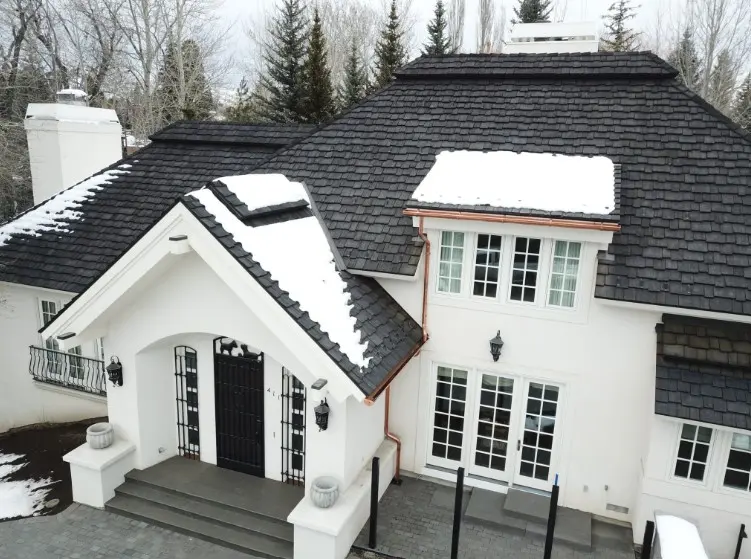As winter approaches, property owners often worry about their roofs facing harsh conditions. Snow, ice, wind, and freezing temperatures can take a toll, especially on unprepared metal roofs. Experts stress the importance of prevention to avoid costly repairs, with foam closure strips for metal roofing being a top recommendation. This simple addition, along with other protective measures, can help safeguard your property during the cold months.
Why Winter-Proofing Your Metal Roof Matters
Metal roofs are durable and built for extreme weather, but without proper sealing, they can still face winter issues. Gaps, exposed seams, and poor insulation can let snowmelt and cold air inside.
Winter-related roof issues include:
- Ice dam formation that leads to leaks
- Cold drafts increasing heating costs
- Water seepage that damages insulation or ceilings
- Pest intrusion through open roof seams
- Structural strain due to snow accumulation
Taking steps to winter-proof your roof ensures energy efficiency, safety, and peace of mind.
What Professional Roofers Recommend
Experienced roofers approach winter preparation using a combination of strategies tailored to metal roofing systems. Below are some of the most trusted methods:
1. Install a Foam Closure Strip for Metal Roofing
A foam closure strip for metal roofing blocks snow, moisture, and pests. It fits the ridges and valleys of metal roofing panels to seal gaps between the panels and the deck. This prevents snow, ice, drafts, debris, and insects from getting through. Matching the panel’s profile, it creates a secure seal without affecting the roof’s look.
2. Add Snow Retention Features
Snow can slide off metal roofs, creating risks for people and property below. Experts recommend installing snow guards to keep snow in place, allowing it to melt safely. These devices help prevent sudden avalanches that could damage gutters or nearby structures and reduce stress on the roof.
3. Ensure Proper Insulation and Ventilation
Warm air escaping a building can cause uneven snowmelt on the roof, leading to ice dams. To prevent this, check attic insulation and ventilation before winter. Proper insulation keeps warm air inside, while good ventilation circulates cold air beneath the roof to maintain consistent surface temperatures. This balance helps prevent ice dams and protects your home.
4. Inspect Flashing and Sealants
Metal roofs use flashing to protect seams, joints, and areas around features like chimneys and vents. These spots can leak if the flashing is damaged or sealant wears out. To prevent water intrusion, experts recommend regularly inspecting the flashing and resealing any weak areas.
5. Clean Gutters and Downspouts
Before the first snowfall, clean out gutters and downspouts. Blocked drainage can cause water to back up, freeze, and create ice dams, leading to water damage. Clearing gutters ensures snow melt flows freely, protecting your home and preventing costly repairs.
Advantages of Using a Foam Closure Strip for Metal Roofing
Among winter-prep tools, the foam closure strip for metal roofing offers great value. Its benefits include:
- Sealing air gaps that cause drafts and heat loss
- Blocking snow, water, and wind-driven particles
- Deterring small animals and insects from entering through the roof
- Helping preserve roofing materials by reducing moisture exposure
- Reducing winter noise such as wind whistling through open seams
Its installation is quick and low-cost, especially when compared to the expensive repairs it can help prevent.
Maintenance Tips for Winter Readiness
Even with all winter-proofing measures in place, ongoing maintenance is essential. Roofers recommend:
- Performing a visual inspection after each heavy snowstorm
- Removing excess snow with a roof rake (from the ground only)
- Rechecking foam closure strips each season to ensure they’re still sealed tightly
- Keeping attic humidity low to avoid condensation under the roof
Following these steps will ensure that your roof remains strong and functional throughout the season.
Conclusion
Metal roofs are designed to handle tough winter conditions, but preparation is crucial. Experts recommend using foam closure strips for metal roofing, along with snow retention systems, insulation, sealants, and regular maintenance. These steps ensure your roof can withstand snow, wind, and freezing temperatures reliably.
Also Read-Harnessing Technology for Efficient Home Management


